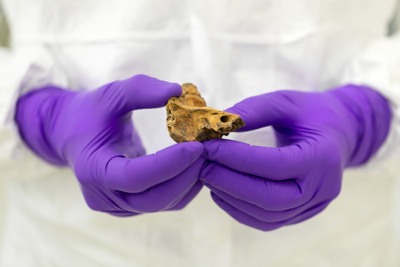Archaeogenetics
Ancient genomes reveal human past
The potential for understanding human evolutionary history has taken great leaps in the last few decades with the rapid development in molecular genetics and population genetic theory.
However, our knowledge about genetic variation in prehistoric humans, and the information about our past hidden in that variation, is still very limited.

With the recent developments for retrieving DNA from ancient human remains, we now have a unique opportunity to unveil the genomic variation of prehistoric humans across the world.
We investigate human evolutionary and demographic history by generating genomic sequence data from ancient humans and using state-of-the-art molecular techniques. We use modern statistical and population-genetic approaches to infer population history, integrating other types of information from prehistory, including archaeological and paleoclimatic records. These joint approaches help us understand the human past, and to infer migration, admixture, population collapses and turn-overs. We are opening a new dimension – time – for understanding evolution, demographic history, disease, and adaptation in humans.
